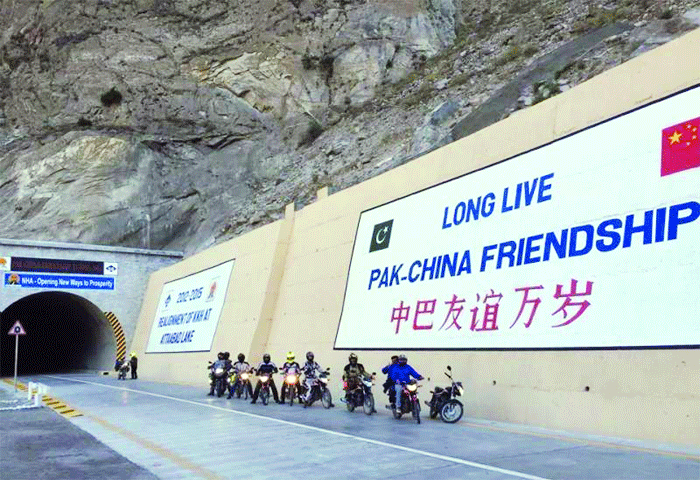Pak-China relations: China and Pakistan have decided to establish the China-Pakistan Economic Corridor (CPEC) to connect China’s Kashgar with Pakistan’s Gwadar port through a network of roads and proposed railway tracks. CPEC is generally considered an overland connection but in reality, it has wider associations. The first move towards the implementation of CPEC came in March 2013 it is when china gained administrative control of Gwadar port, which was previously handled by the Singapore port Authority.
Initially, the CPEC is a project which is to be completed in the mentioned time period. The two sides agreed to divide the project into two categories. The First was known as short-term projects which were agreed to be completed in three to five years; the second was the long terms projects, which would be completed in ten to fifteen years.
Moreover, the CPEC was connected to Socio-political and Socio-economic problems. For example, in the government of Pakistan Muslim League Nawaz (PML-N) the work of CPEC was going with the flow. But in 2018 the PTI government came into power. The Chinese did not like the attempts by the outgoing Pakistan Tehreek-e-Insaf (PTI) government to renegotiate the costs of CPEC projects and establish the CPEC Authority. Mr. Khan presumed that most of the CPEC projects were scarcely negotiated or done so in a skewed manner. In this regard, the CPEC was stopped and no such projects were taken place to implement the agreements of CPEC to fulfill the projects of CPEC.
Read CPEC: The Silver Lining for Pakistan’s regressing Political Economy
Furthermore, when the PTI government failed to run the country then all the political parties on the national level merged and formed Pakistan Democratic Movement (PDM). After that PDM formed its own government by choosing the opposition leader Shehbaz Sharif. On the 10 of April 2022, the PDM decided to bring a vote of a no-confidence motion against the Imran Khan who failed to secure votes in the no-confidence motion and the opposition leader Shehbaz Sharif became the Prime Minister of Pakistan.
After this major swift Prime Minister Shehbaz Sharif’s first official trip to China, which begins early next week, will focus on the immediate ‘restart’ of the multibillion-dollar CPEC initiative and swift completion of the pending large infrastructure projects. On the table are a $10bn railway project, the Karachi Circular Railway, and energy generation schemes worth $18.5bn that had been delayed due to frosty ties between the PTI government and Beijing, deferrals in payments to Chinese power producers and the liquidity troubles Pakistan has been facing for the last five years.
Both sides agreed to add four new corridors—digital, industrial, green, and health—to the CPEC project. China has more conscious of the CPEC as it was connected to china’s grand initiative one belt one road (OBOR). The OBOR will renew the primeval silk route by connecting over 60 Asian countries, Europe and Africa with another three billion people.
The CPEC is beneficial for both sides in terms of china the corridor could serve china’s energy needs by providing.
Pak-China relations
60% of china’s oil comes from the Gulf by ships traveling over 16,000 KM in 45-50 days. CPEC provides cost-effective, shorter, and safer access to energy sources. It cut the 10 days and the distance to a mere 5000 KM. The analyst says that securing a route to the Indian Ocean via the port of Gwadar will do the job nicely, and will also help china develop its military presence in the region while playing a role in its ‘string of pearls’ strategy. For Pakistan, CPEC offers economic and strategic benefits; huge investment in energy, infrastructure, and industrial sectors. Experts say will create new jobs and generate economic activity. It will also help to tackle insurgency and terrorism by offering economic incentives to people discouraging them from turning to militancy. It will boost Pakistan’s industrial and agricultural sectors. Pakistan expects that there will be a 15% increase in its GDP by 2030, once CPEC is completed.
Pakistan must ensure the maximum implementation of CPEC projects to be completed on the time. China’s investment in CPEC is the largest in the history of the two countries and it is indicative of the high stakes Beijing has invested in Islamabad. It is an important factor for the OBOR initiative and serves china and Pakistan’s economic and strategic interests. CPEC can potentially complement china’s modernization of its western region to neutralize separatist tendencies through the economic uplift of Xinjiang while gaining shorter access to the Indian Ocean, the Gulf, the Middle East, and beyond. For Pakistan, it will bring about an unprecedented level of investment leading to infrastructure development and job creation.
Pakistan could generate revenue through the royalties it earns. Strategically, china’s backing will enhance Islamabad’s stature in regional politics. The success of CPEC will decide the future of Sino-Pakistan relations.
